Natural Disasters in Massachusetts: What Homeowners and Renters Need to Know
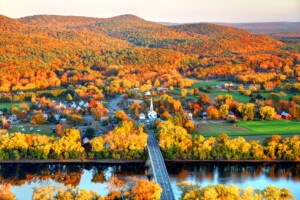
Massachusetts is known for its historic roots, cultural cities, and varied landscapes ranging from the luxurious Berkshire Mountains to dozens of state parks highlighting the natural beauty throughout the state. The climate is generally humid and moderately wet, usually seeing plenty of rain and snow.
No matter where you live in Massachusetts, though, you are at risk of natural disasters, such as flooding, hurricanes, and winter storms. When these happen, it’s essential to be prepared.
So what are the most common natural disasters in Massachusetts, how are they changing, and what can you do to prepare? Whether you’re planning a move to Boston or are looking at apartments in Worcester, read on for everything you need to know.
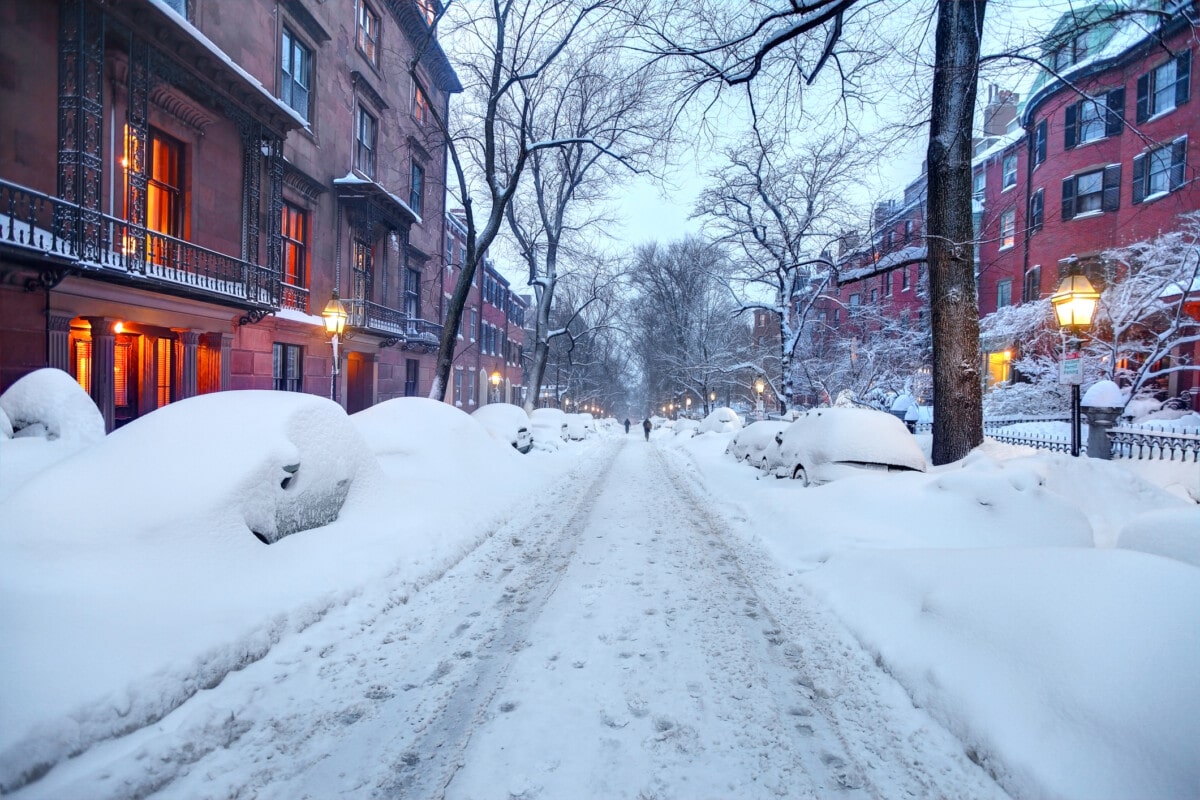
Massachusetts winter storms
Massachusetts is no stranger to cold, snowy winters. In fact, Worcester, MA, is one of the snowiest cities in the country, and some of the state’s most devastating natural disasters have come from strong winter storms.
Massachusetts primarily sees storms called nor’easters. These are fairly common throughout New England and typically form during the winter and spring as a result of bitter arctic wind crossing over the warmer Atlantic Ocean. Nor’easters are a regular occurrence in the Northeastern Atlantic, but can become very dangerous. For example, the Blizzard of 2022, which dropped over 23 inches of snow in Boston and caused more than 100,000 people to lose power, was a strong nor’easter.
Lake-effect snow, which is heavy snow that falls on the eastern shores of the Great Lakes, is not much of a factor in Massachusetts, but can fall in the far west. Ice storms are also a risk throughout the state.
How to prepare for winter storms in Massachusetts
Preparing for severe winter weather is essential in Massachusetts, especially in the Berkshires and surrounding foothills. This helps ensure your safety and minimizes impact on your home and family. Here are a few tips to help you prepare for winter:
- Winterize your home by inspecting your roof, clearing gutters, cleaning your chimney, insulating your attic, checking your heating system, and insulating your pipes.
- If winter weather includes an ice storm, take extra precautions, such as using snow-melting salt or pellets on your walkways and driveway, clearing your gutters, covering pipes, and trimming trees to prevent them from falling.
- Stock up on rock salt, sand, and snow shovels.
- Update your emergency kit to include extra warmth.
- Keep a supply of firewood or alternative heating sources in case the power goes out.
- Charge or refuel your vehicle, and equip it with chains, extra blankets, a shovel, and emergency supplies.
- Prepare alternate travel routes, as storms often cause road closures.
- Stay updated on weather forecasts and make sure you have a reliable method of communication.

Massachusetts flooding
Massachusetts cities most at risk of flooding
- Tisbury: 15% of properties at risk
- Boston: 14% of properties at risk
- Springfield: 13% of properties at risk
Flooding in Massachusetts is relatively common and impacts a large portion of the state, especially people living on the coast. In fact, over 400,000 residents currently live in a flood zone. While not as flood-prone as states like Pennsylvania or Florida, it is a major part of life across the region.
In some areas, flooding is simply a new reality, as heavier rains and rising sea levels create more common and widespread flooding. This was especially pronounced in the summer of 2023, when 20 inches of rain fell across the state in just three months, causing fairly frequent isolated flooding.
Research shows that heavier, more frequent rainfall will increase as climate change progresses. In fact, the rainiest year in Boston history came in 2018 when it recorded 61 inches, possibly due to much warmer than average annual temperatures.
How to prepare for flooding in Massachusetts
In Massachusetts, preparing for a flood is essential, especially along the state’s many rivers and wet coastline. Here are a few tips to help:
- Sign up for AlertsMA to receive critical information and emergency alerts before, during, and after natural disasters and severe weather.
- Familiarize yourself with national and statewide flood risk maps to see your potential risks.
- Understand your local flood and tsunami evacuation routes.
- Purchase flood insurance if you’re in a high-risk zone and can afford it. Flood insurance is legally required if your home has a high risk.
- Invest in flood sensors.
- Elevate valuable items in flood-prone areas of your home, and install sandbags or barriers if necessary.
- Stay tuned to weather forecasts and alerts, and have a communication plan in place with your family.
- During and after heavy rainfall, be on the lookout for landslides, mudslides, and debris.
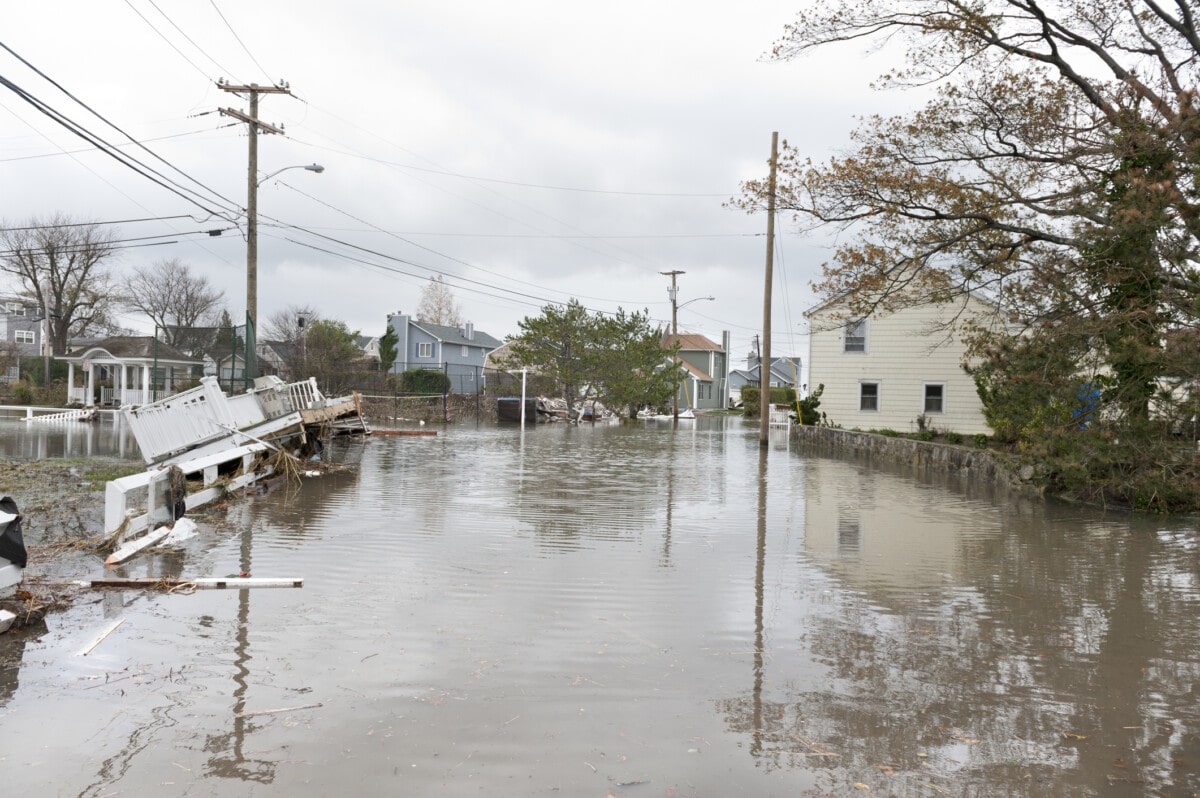
Massachusetts hurricanes and thunderstorms
Massachusetts cities most at risk of dangerous storms
- Barnstable: 100% of properties at risk
- Tisbury: 100% of properties at risk
- Boston: 99% of properties at risk
Hurricanes are relatively rare in Massachusetts, especially when compared to southern states like Florida and Texas. However, when they do hit, they affect millions of people and can cause widespread damage. Most Massachusetts hurricanes come from the Atlantic Basin and usually only impact the state from mid-August through October. Interestingly, hurricanes are part of what makes Boston one of the windiest cities in the country.
In Massachusetts, hurricanes and other strong storms are especially damaging due to heavy rainfall and flooding, which can overwhelm rivers and storm drains. The most recent hurricane to hit the state was the remnants of Hurricane Lee in September 2023, which produced minor flooding and dangerous waves in coastal areas.
Additionally, unique to the Central and Eastern U.S. are Derechos, which can happen year-round but are most common from May through August. Derechos are a band of strong, long-lasting thunderstorms that can produce hurricane-force winds across hundreds of miles. Derechos are rare in New England, but can be very damaging when they strike. Most recently, a late-season Derecho passed over central Massachusetts on October 7, 2020, causing widespread power outages and localized damage.
How to prepare for hurricanes and thunderstorms in Massachusetts
Massachusetts is at risk of hurricanes and severe storms, so it’s essential to be prepared. Here are a few tips to help:
- Stay updated on forecasts and follow all official evacuation orders.
- Familiarize yourself with Massachusetts’ evacuation map. Many cities have evacuation shelter maps as well.
- Create a waterproof emergency kit, which should include water, nonperishable food, a can opener, medications, first aid supplies, important documents, and more.
- Keep a charged, durable communication device on hand.
- Strengthen your home from winds by decluttering drains and gutters, bringing in outside furniture, and trimming trees.
- Secure your doors and board windows, or install hurricane shutters. You can also hire a contractor to help prepare your home.
- Purchase flood insurance or update your policy.
- If you live on the coast, especially around Nantucket, Provincetown, and Oak Bluffs, raise your home to protect it from storm surges and flood damage
Massachusetts heat waves
Massachusetts cities most at risk of heat waves
- Boston: 80% of properties at risk
- Barnstable: 70% of properties at risk
- Tisbury: 14% of properties at risk
Heat waves aren’t something people generally associate with New England. However, Massachusetts does experience heat waves that can be strong and long-lasting. Recently, in July 2023, a heat wave that spread across the entire Northeast brought heat indexes to well near 100 degrees Fahrenheit in large cities like Boston, where many residents don’t have air conditioning. In fact, Massachusetts law bans the use of A.C. in apartment buildings from September 15th to June 15th every year, which caused widespread distress during a heat wave in 2021.
Heat waves aren’t the only issue, either. If current global emissions levels persist, the average temperature in Massachusetts is expected to rise from 50 degrees to 54 degrees by 2050 and 58 degrees in 2090. Additionally, research shows that along with higher average temperatures, heat waves will increase in duration and severity. The urban heat island effect can make this unbearable in many areas, especially lower income neighborhoods that lack access to green space, cooling amenities, and other necessities.
How to prepare for heat waves in Massachusetts
Heat risk in Massachusetts can be intense during heat waves, primarily in the summer and early fall, and when paired with high humidity. Here are a few ways to stay cool in extreme heat:
- Stay updated on forecasts and advisories to prepare for a heatwave.
- Close blinds, shades, and curtains.
- Install temporary window reflectors between windows and drapes.
- Purchase air conditioning if you can, or get to a location that does.
- Prepare a meal plan that doesn’t involve cooking indoors.
- Install a generator in case the power goes out due to strained utility systems.
- Stay hydrated before, during, and after a heat event, especially if there is high humidity.
- Limit outdoor activities to the early morning and late evening.
- If your home is above 95 degrees and you don’t have AC, don’t use a fan to cool yourself down.
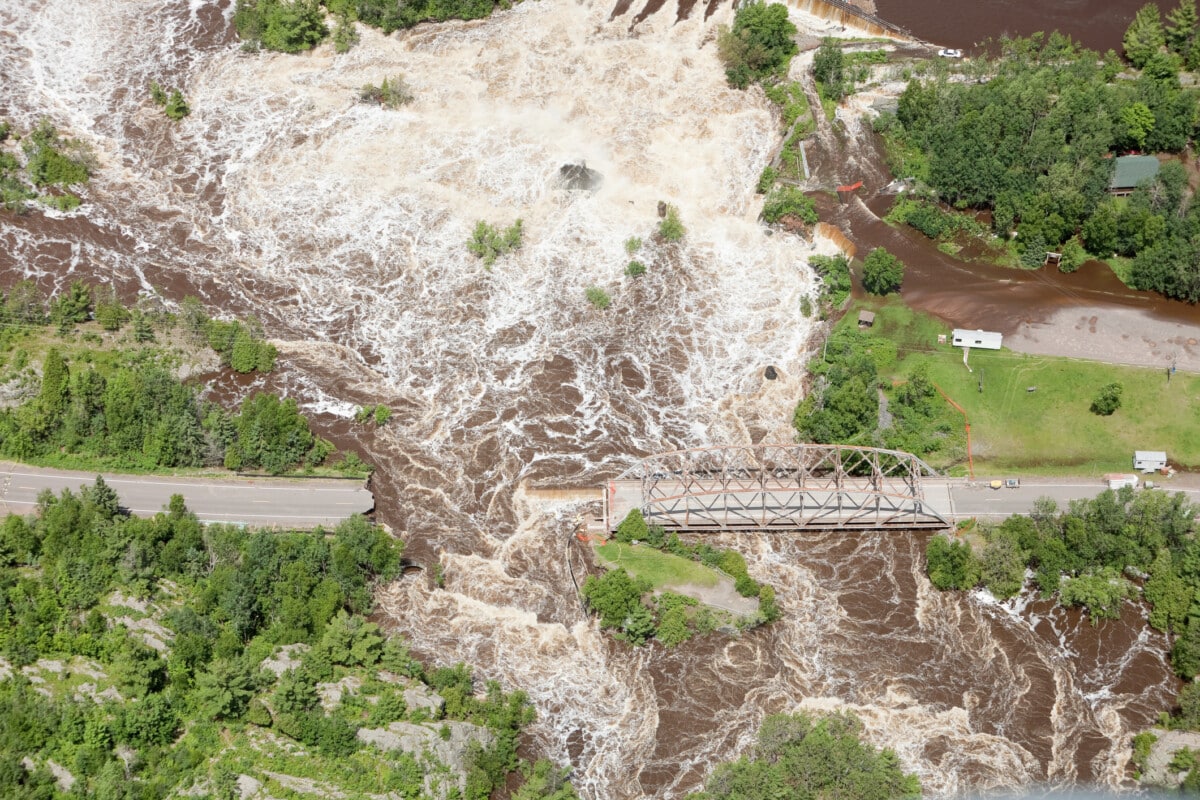
Massachusetts landslides
Landslides are a risk in Massachusetts. Most occur in mountainous regions, like the Berkshires. Landslides typically result from heavy rain and snow, often from tropical storms, thunderstorms, or hurricanes.
Large landslides have occurred recently. In 2011, Hurricane Irene caused four major landslides to trigger along the Cold River, closing a six-mile section of highway for nearly 4 months. These were among the largest landslides to occur in the state since 1901.
How to prepare for landslides in Massachusetts
The most important part of preparing for a landslide is thinking ahead and familiarizing yourself with the landscape. Importantly, don’t build a home or structure near steep slopes, close to mountain edges, or along natural erosion valleys and rivers. Here are some additional tips to help:
- Check if your property has been affected by landslides in the past, as these areas are most at risk.
- Consult a professional for retrofitting, such as flexible pipe fittings.
- Plant ground cover on slopes, and build retaining walls around your property.
- Build channels or deflection walls to direct mudflow around your home. However, if you direct debris into a neighbor’s property, you may be liable for damages.
- Consider purchasing landslide insurance (if possible), as standard homeowners insurance policies generally don’t cover damage from landslides or mudslides.
- Remain alert during periods of heavy rain, especially if you live on a hillside.
- Recognize warning signs, such as new or widening cracks in your home’s structure, bulging ground, or unusual sounds.
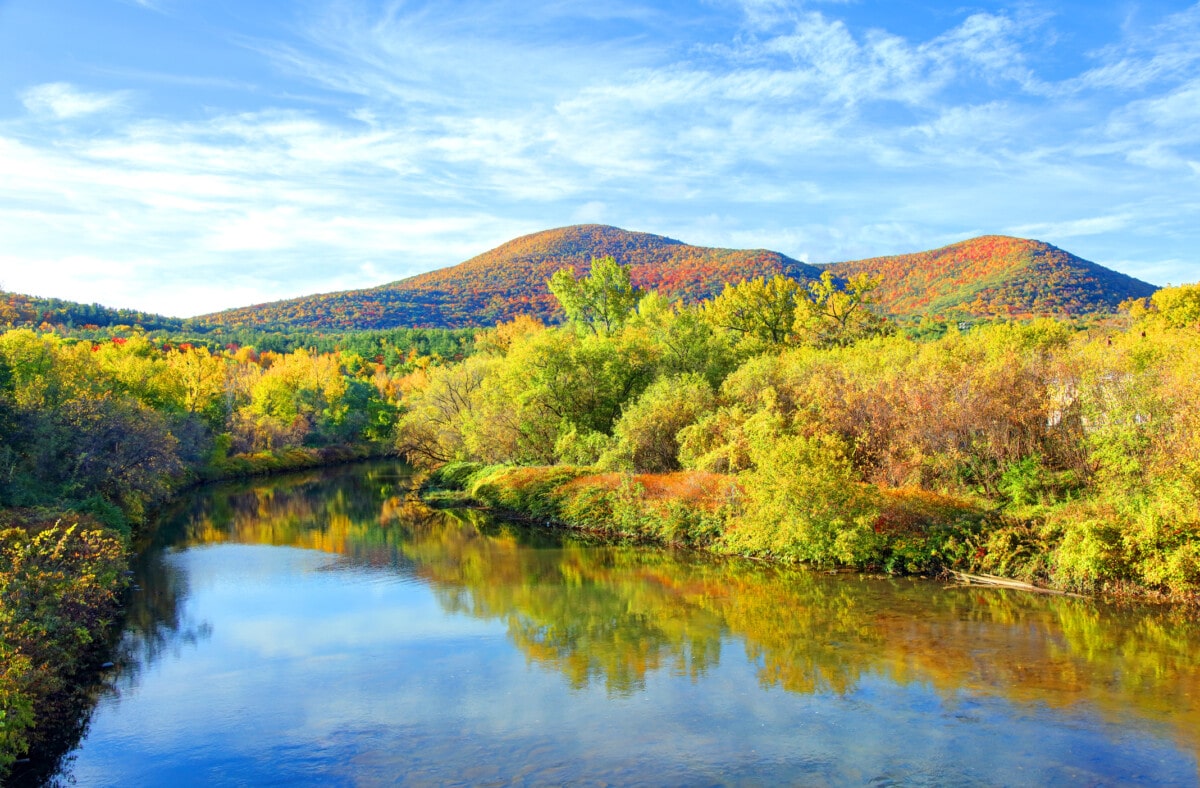
Final thoughts on natural disasters in Massachusetts
Massachusetts is a historic, chilly state that sees plenty of sun, rain, and everything in between. As such, it’s also prone to numerous natural disasters, such as hurricanes, heat waves, winter storms, and more.
If you’re considering moving to Massachusetts or already call The Bay State home, it’s essential to prepare for natural disasters. Understanding your risks and adequately preparing are helpful to make the most out of living in Massachusetts. NOAA and FEMA offer maps that show forecasted and possible risks in any given area, which can help you prepare.
Lastly, many natural disasters are worsened by climate change. So no matter how you prepare, reducing your carbon footprint and fighting for systemic change are the best long-term solutions.
“At risk” means a property has a major or greater probability of being affected by a certain risk in the next 30 years. State and metro data is courtesy of First Street Foundation.
This article is for informational purposes only. Individual results may vary. This is not intended as a substitute for the services of a licensed and bonded home services or disaster prevention professional. Always seek expert advice and follow all official guidance before, during, and after a disaster.
The post Natural Disasters in Massachusetts: What Homeowners and Renters Need to Know appeared first on Redfin | Real Estate Tips for Home Buying, Selling & More.
